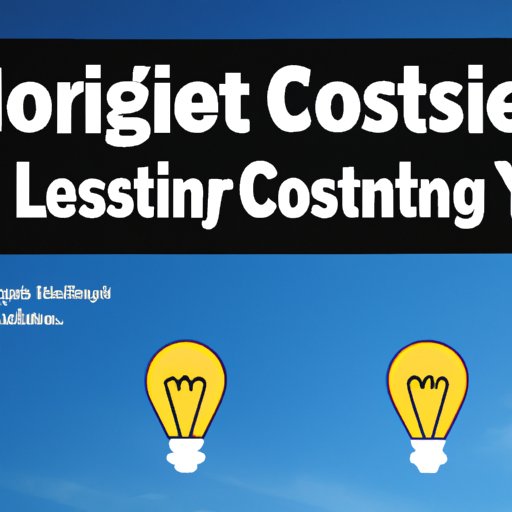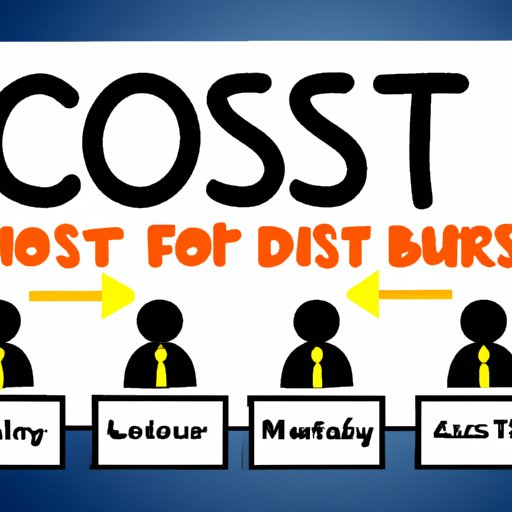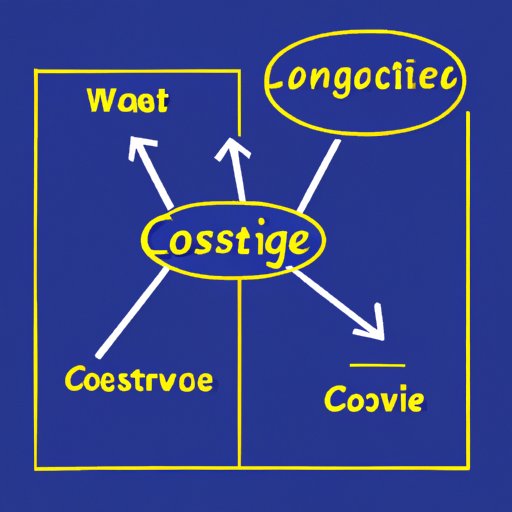Introduction
Cost leadership is a popular business strategy that involves reducing costs to gain a competitive advantage. Cost leaders are able to offer lower prices than their competitors, which allows them to capture a larger market share. While it is not the only way to achieve success, cost leadership has been used by many successful companies to gain an edge over their rivals.

Exploring Cost Leadership – A Comprehensive Guide
In order to understand cost leadership, it is important to first define it. According to the Harvard Business Review, cost leadership is “a strategic approach that focuses on reducing costs in order to gain a competitive advantage.” In other words, cost leadership is about finding ways to do more with less, so that you can offer your products or services at a lower price than your competitors.
There are various types of cost leadership strategies, including operational efficiencies, process improvements, and outsourcing. Operational efficiencies involve streamlining processes and eliminating waste, while process improvements involve making changes to existing processes to make them more efficient. Outsourcing involves contracting out certain tasks to third parties, such as manufacturing or customer service. By utilizing these strategies, businesses can reduce their costs and become cost leaders.
The benefits of cost leadership are numerous. It can help businesses increase their market share, boost their profits, and attract new customers. Additionally, it can give businesses a competitive edge and help them stand out from the competition.

Cost Leadership: Strategies and Techniques for Achieving Competitive Advantage
In order to become a cost leader, businesses must identify and analyze their cost drivers. Cost drivers are factors that increase or decrease the cost of producing a product or service. Examples of cost drivers include labor costs, raw materials, overhead costs, and technology. By studying these cost drivers, businesses can identify areas where they can reduce costs and become more competitive.
Another key component of cost leadership is analyzing competitors’ costs and pricing strategies. By understanding their competitors’ costs, businesses can gain insight into how they can reduce their own costs. Additionally, businesses should be aware of their competitors’ pricing strategies, so they can adjust their own prices accordingly.
Leveraging economies of scale is another important part of cost leadership. Economies of scale refer to the cost savings that are achieved when production increases. By increasing production, businesses can reduce their unit costs and become more competitive. Additionally, businesses should take advantage of technology to reduce costs. Technology can help automate processes, reduce overhead costs, and streamline production.

How to Use Cost Leadership to Drive Your Business Forward
Once businesses have identified their cost drivers and analyzed their competitors’ costs and pricing strategies, they can begin to craft a cost-effective business model. This business model should focus on reducing costs while still providing quality products or services. Additionally, businesses should set competitive prices to give themselves a competitive edge. Finally, businesses should take advantage of marketing strategies to increase customer demand.
Cost Leadership: The Benefits, Challenges and Opportunities of Low-Cost Strategies
Cost leadership offers many benefits. It can help businesses increase their market share, boost their profits, and attract new customers. Additionally, it can give businesses a competitive edge and help them stand out from the competition. However, there are also some challenges associated with cost leadership. For example, businesses may find it difficult to maintain their cost leadership position in the long run, as competitors may copy their strategies and undercut their prices.
Despite the challenges, there are also many opportunities for businesses to capitalize on cost leadership. For example, businesses can use cost leadership to differentiate themselves from their competitors, attract new customers, and increase their profits. Additionally, businesses can use cost leadership to expand into new markets and gain a competitive edge.
Crafting a Winning Cost Leadership Strategy for Your Company
Developing a comprehensive cost leadership strategy requires careful planning and execution. First, businesses should identify their cost drivers and analyze their competitors’ costs and pricing strategies. Next, they should develop a cost-effective business model and set competitive prices. Finally, they should utilize marketing strategies to increase customer demand. Once the strategy is in place, businesses should evaluate its performance and make adjustments as needed.
Conclusion
Cost leadership is a popular business strategy that involves reducing costs to gain a competitive advantage. There are various types of cost leadership strategies, including operational efficiencies, process improvements, and outsourcing. Additionally, businesses can leverage economies of scale and utilize technology to reduce costs. Crafting a winning cost leadership strategy requires careful planning and execution, but the rewards can be great.
(Note: Is this article not meeting your expectations? Do you have knowledge or insights to share? Unlock new opportunities and expand your reach by joining our authors team. Click Registration to join us and share your expertise with our readers.)
